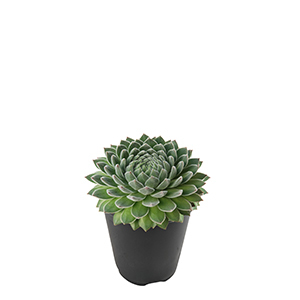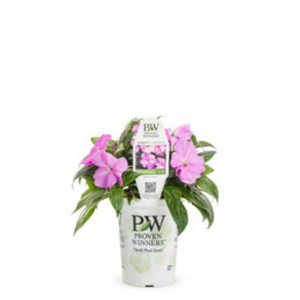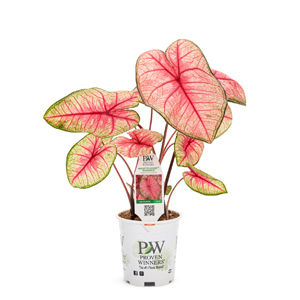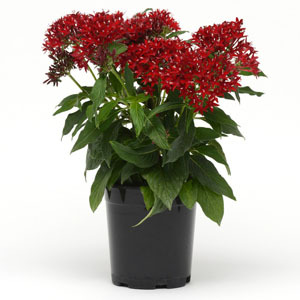
Light Needs

Mature Height

Mature Spread
What an herb! Dill is a favorite herb to use in cooking, especially in pickling or on healthy foods like fish. Growing your own dill is rewarding in so many ways: Use the weed (fine, feathery leaves) or dried seed in cooking. The native Mediterranean plant also is a pretty and valuable garden plant that you can place in a vegetable garden or alongside flowering plants.
Dill typically grows to at least 4 feet high, with an upright shape. If this plant's scent, usefulness and pretty appearance are not enough, consider this: Dill is a host for several types of swallowtail butterflies. Although the caterpillars can pretty much strip the leaves bare, dill is an important host plant for the butterflies.
Dill Plant Care
Find a spot for dill outside that receives at least 6 hours of direct sun each day. Wait until temperatures warm to about 70 degrees. Dill can thrive in soil that might be too poor for other herbs and vegetables to make it. It will do best in soil that drains well and is nice and warm. Space dill plants at least 12 to 15 inches apart to give each plant plenty of room to grow. Some outdoor dill plants might need shelter from heavy winds or staking.
Growing Dill Plants
Space planting time to have dill plants at various stages of weed and seed production for you and the caterpillars. Dill can reseed in areas of the garden if the seeds stay on the plant. The little seedlings are easy to pull up, however. You can harvest dill leaves as soon as they grow, clipping close to their stems. Dill is best if harvested in early morning or at dusk. The leaves' flavor is best if harvested before flowers begin to appear on the plant. That means pinching off the flowers as they begin to grow if you want dill weed more than dill seed. If you want a fresh clipping of dill weed right away for cooking, grow the plant indoors in a container.
Be sure to choose a tall container that can accommodate the plant's long roots. Make sure a container for dill has holes for drainage and give the plant as much sunlight as possible outdoors or supplement it with fluorescent grow lights if growing dill indoors.
Watering Dill Plants
Water dill regularly Don't overwater, though, especially if the soil in a container or the ground does not drain well.
Feeding Dill Plants
Dill doesn't need much in the way of fertilizer. You can apply a balanced fertilizer in late spring around the surface of the plant to help it along.
Dill Plant Information
| Common Name: Dill |
| Botanical Name: Anethum graveolens |
| Plant Type: Dill |
| Edible Type: Herbs |
| Vegetable Size: - |
| Light Exposure: Full Sun (+6 hrs.) |
| Spacing: 10 - 14" (25 - 36cm) |
| Height: 12 - 24" (30 - 61cm) |
| Width: 10 - 16" (25 - 41cm) |
| Brand: BURPEE® |
Growing Dill From Cuttings
Is it easy to grow dill from cuttings?
When is the right time to take dill cuttings?
How do you advise people to take dill cuttings?
How long does it take for dill to root in water? When should you transplant cuttings?
- SKU:
- DILREP
Please Note: The pictures below are to give a general representation of the different container sizes. The actual size/ages of plants are estimates and will vary based on type of plant, time of year, last pruning & many other factors.

Also Known As:
3.5" Container
Plant Age:
~ 6 months
Plant Size:
~ 3"-6"
Pot Size:
~ 4.5"H x 3.75"W
Volume:
~1.42 quarts

Also Known As:
4.25" Container
Plant Age:
~ 6 months
Plant Size:
~ 3"-6"
Pot Size:
~ 4.93"H x 4.25"W
Volume:
~1.56 pints

Also Known As:
Quart
Plant Age:
~ 6 months - 1 year
Plant Size:
~ 4"-8"
Pot Size:
~ 4.75"H x 4.5"W
Volume:
~1.50 quarts

Also Known As:
#1 Container
1 Gallon
Plant Age:
~ 1 - 2 years old
Plant Size:
~ 10"-14"
Pot Size:
~ 7"H x 7.75"W
Volume:
~2.26-3.73 quarts

We stand behind our plants with industry-leading guarantees to give you peace of mind.
We want your plants to arrive in great condition! If you notice any issues upon delivery, contact us within 3 days.
All annuals, houseplants & vegetables, we provide a 30-day warranty to ensure that your plants thrive.
Plants that are currently in stock typically ship within 2-7 business days after your order is placed.
Plant Addicts ships to the lower 48 states within the U.S. Unfortunately, we do not currently ship to Alaska, Hawaii, or internationally.
This plant cannot be shipped to the following states: Idaho, AK, HI. These restrictions apply only to this specific plant due to agricultural regulations or other limitations. Other plants may still be available for shipping to these states.
If you have any questions about shipping restrictions, feel free to reach out to our team!











